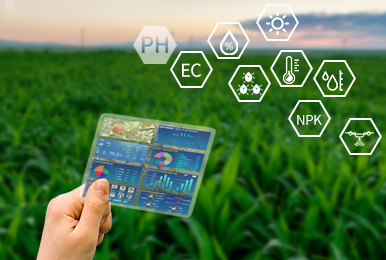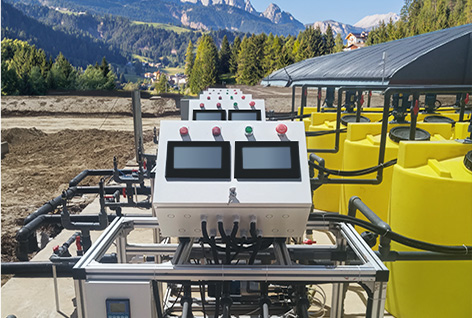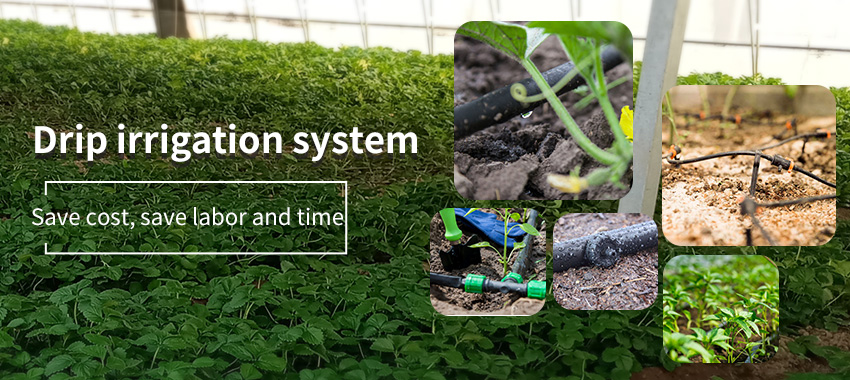Background on smart agriculture
Today, farmers are looking to the sky not for rain to come but for their drones to seed the crops or spray the soil. Technology in agriculture is on its way. Over the next few years, it will create huge demand for new technological skills among farmers.As the old saying goes, if you want to do it right, do it yourself. For agriculture, we might modernize this saying as follows: If you want to do it right, automate it. With the continuous improvement and development of Internet of Things technology, smart agriculture has changed the traditional way of agricultural planting, making agriculture more intelligent and scientific.
As the old saying goes, if you want to do it right, do it yourself. For agriculture, we might modernize this saying as follows: If you want to do it right, automate it. Today, farmers are looking to the sky not for rain to come but for their drones to seed the crops or spray the soil. Technology in agriculture is on its way. Over the next few years, it will create huge demand for new technological skills among farmers.

Is farming automation legal?
Farmers and agribusinesses continue to struggle from massive urbanization and a lack of workers. In addition, the COVID-19 pandemic minimized contact between workers. The US government took a bold move to legalize in-field robotics in agriculture to prevent disruptions to the growing season.
Not everyone took this decision well, with some claiming that robotic automation may take jobs from workers. Still, the agricultural industry requires changes. It sees many cases of discrimination, theft, and safety and health violations. In response, the US government has implemented H-2A visa reform, providing for better protection of H-2A workers and their families by improving agricultural safety standards. The US government can continue this reform path by implementing the Farm Workforce Modernization Act, which changes the way people work at farms.
Automation in farming: what technologies to use
Two well-established technologies stand behind farming automation: machine learning and the Internet of Things. They are backed by GPS and GIS to ensure accurate movement of automated machinery and robotics in the fields. IoT sensors and high-resolution cameras help to monitor and guide machinery to perform specific tasks. For now, agricultural robots are not fully automated but rather programmed to perform particular operations with a certain level of automation. Soon, these robots will make workers’ lives easier and safer. Still, they will require human operators.
Automation is coming gradually with robotics, automated machinery, and drones leading the way. These technologies will shift the required skill set for farming workers to one that is more technological and software-related. Here are some of the core technologies that will shape agriculture in the near future.
GIS-powered weeding
With farming automation, the number of people in the fields will decrease. And GIS-powered weeding together with IoT sensors for more precision will ensure harvesting goes safe and sound.
Precision picking
Some plants ripen faster, some slower. It’s important to pick at just the right time and recognize certain parameters. Additionally, many berries, fruits, and vegetables are very tender and require a careful touch to pick. Timing and accuracy are the main requirements to make picking successful. Automation and precision based on data together with a carefully calculated robotic touch will make the process fast and efficient.

Untrivial farming robotics
Vertical farming wins big among automation technologies. With automated processes, 8 to 10 people can run an 8,000-square-meter indoor farm. Uniting technologies like smart LED lighting, hydroponics, and cloud-controlled robots, farmers can take care of leafy greens using 90% less water.
What technological skills will be in demand
Agricultural automation will happen in four major directions — seeding, weeding, picking, and indoor farming. Farming workers should adapt to the new reality to keep up. As we discussed earlier, farms will not be fully automated, so a combination of manual and automated work will stay. To meet the needs of tomorrow, agricultural workers will need to acquire new skills like these:
Basic software skills
Farm workers will need to be comfortable working on tablets and other electronic devices, have stable Wi-Fi connections in the field, exchange messages, compress files, etc.
Microsoft Office/G Suite
Farmers will be masters of the major team communication and data sharing tools. They will work in spreadsheets, insert data, and extract data.
SPSS or SAS
Modern farming has a lot in common with statistics. Farm workers will analyze lots of data, find patterns, and draw insights.
Geographic Information System (GIS)
GIS is becoming the holy grail of precision farming, so workers will have to run machinery that is guided by GIS for effective field operations and planning.
IT aptitude
An aptitude to acquire IT-related skills will allow workers to gain the required technological skills listed above and every other skill their employer might eventually require.
How automation improves agriculture
As other industries are embracing technology, we see that technology is not stealing jobs from people. On the contrary, technology makes work safer and more efficient. Farm automation makes the lives of those in the agricultural sector easier, regardless of their position. There are several main operations where robotics can improve agriculture.
Monitoring and analytics
Agricultural software is already used for monitoring and analyzing crops. The global market for agricultural robots is expected to grow from $4.9 billion in 2021 to $11.9 billion by 2026. Agricultural robotics help farmers detect maladies, eradicate them, and meet market demands by preserving crops and increasing yields.
Guidance
All critical factors of successful agricultural campaigns can be defined by data-driven technologies. Agricultural robotics enable multi-criteria decision-making (MCDM) to define soil quality, crop health, and moisture levels in order to find the best way to grow crops in a particular area.

Irrigation
Automated irrigation can cut down farming costs. From locating the most suitable lands to making deserts flourish, technologies open new ways to grow food. Saving water and directing it where it’s needed the most, data-driven irrigation is winning huge from automation.
Conclusion
At the end of the day, robotics automation will not turn farming upside down. It will rather help agricultural workers become more advanced, clever, and productive while being physically comfortable. The Association for Advancing Automation calls farm workers of the near future fleet managers taking care of robotic farming systems and autonomous vehicles. Farmers will become fleet managers who are responsible for agriculture machinery, robots, and drone fleets. They will control and move equipment to required areas, set it up, monitor it, and simply turn it on and off.
Automating farming is not about substituting machines for people. It’s about changing people’s scope of responsibilities and boosting safety. Automated machines will refine agriculture by letting people make accurate decisions based on land erosion, crop health, water use, and many other factors.
Farming automation is all about enjoying the process and being sure of the result. New skill sets will be required, but the jobs will still be there: safe, legal, and more advanced than ever.